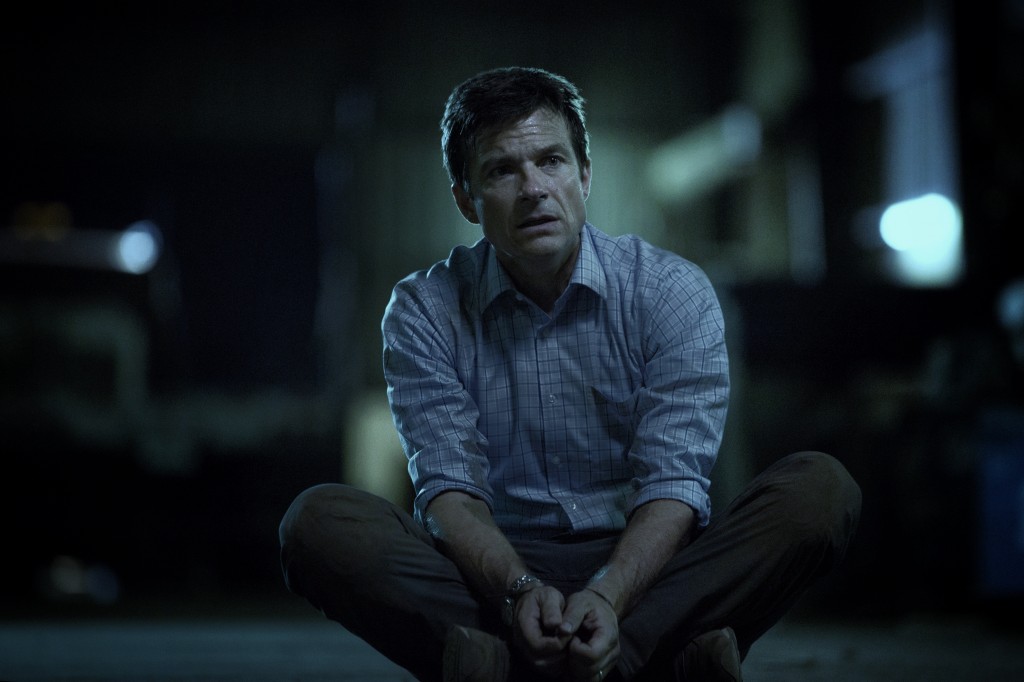
After more than 35 years of operation, TBI is closing its doors and our website will no longer be updated daily. Thank you for all of your support.
TBI Special Report Part Three: AVOD, SVOD & FTA: What’s Next?
Covid-19 has blindsided most of the TV business but the severity of the repercussions on SVOD, AVOD and broadcast sectors look likely to be felt across the long-term, writes Richard Middleton.
There is a school of thought that the current pandemic we’re living through will provide the impetus for a wholesale shift in the way we consume content.
For most advertising-driven broadcasters and cable operators, life was already pretty tough. Cord- cutters in the US were increasing in number; the spending power of American media conglomerates was growing and being targeted at vertically integrated OTT services; younger demos were continuing to desert linear; and incumbent SVOD’s were surging, despite their proliferation in number.
Life under lockdown for ad-supported channels looks even less rosy. Brands are clamping down on marketing spend while reliable rating-draws – from the Tokyo Olympics to Wimbledon and football’s European Championships – have been axed. Yet the situation is evolving quickly and while commercial channels undoubtedly face huge challenges, it is clear that the impact of Coronavirus has been scattered widely.
Broadcasters braced
Nevertheless, it has been broadcasters that have been hardest hit and the global impact of Covid-19 has been mirrored by its effect on channel operators around the world. Pick any country and it is easy to find examples: in Spain, domestic operator Atresmedia has cut back the salaries of its board of directors by 40%; revenues at Seven West Media in Australia are down by at least 50%; execs at UK duo ITV and Channel 4 have taken pay cuts and suspended dividends, in the former’s case.
More important than shaving percentages off exec pay though is the impact on programming budgets. C4, reflecting hundreds of others around the world, has unveiled almost £250m ($310m) of cost-cutting measures to deal with the advertising slump, with £150m slashed from its programming budget. C4 said it expected ad revenues to be down by 50% over April and May, reflecting similar falls in countries ranging from Israel, to Australia and Brazil.
C4’s content chief Ian Katz says the cuts “reflect both the delay of programmes which have been unable to be produced due to the circumstances and a number of shows which will regrettably have to be cancelled. This will impact the whole portfolio with a number of new shows on E4 also postponed or cancelled.”
Katz adds that new shows for the remainder of the year are still being sought, in addition to content for 2021, but he admits that the rate of commissioning will slow. “The Coronavirus crisis has hit all commercial broadcasters with a double whammy of lost production and dramatically reduced revenues but it also poses a profound creative challenge which our indie partners have risen to with remarkable ingenuity, speed and resourcefulness,” adds Katz.
While a handful of broadcasters have been relatively unaffected by ad slumps – such as the licence fee-funded BBC in the UK – almost all have been the recipients of soaring viewer numbers. ITV has seen record numbers for some of its shows over recent weeks, such as Ant And Dec’s Saturday Night Takeaway, but without advertisers to spend, there will be little impact felt on the bottom line.
Over in the US, it is a similar story. Telco giant AT&T revealed stinging losses for its WarnerMedia division, with revenue down from $8.4bn to $7.4bn year-over-year. It pointed to the lack of ad spending due to the cancellation of the NCAA Men’s Division Basketball Tournament – better known as March Madness to most punters. The company has also lost a little under 900,000 TV subscribers in the past three months, in a continued downward spiral for the operator. This is not all down to Covid-19, of course, but it is magnifying the situation.
SVOD success stymied?
Such news makes the emergence of HBO Max, its new streaming service set to debut 27 May, even more important. AT&T chief John Stankey made no bones about it, describing the new service as “a high priority”. It will offer 10,000 hours of content ranging from perennials such as Friends to new original Love Life and feature documentary On The Record, as well as underground ballroom dance competition series Legendary, unscripted series Craftopia and Sesame Workshop’s The Not Too Late Show With Elmo.
The upside for producers is that this necessity to succeed probably means consistent spending on premium programming. Just last week, a month into the Covid-19 crisis, HBO Max unveiled three new dramas from JJ Abrams and Katie McGrath’s Bad Robot Productions and Warner Bros. Television Group.
But the crisis is also pushing more content online, with upcoming movie Scoob! pulled from cinemas and now heading to TVOD services followed by “an exclusive streaming premiere on HBO Max.” Stankey says that this is a part of the operator’s “rethinking of our theatrical model” and that it is “looking for ways to accelerate efforts that are consistent with the rapid changes in consumer behaviour from the pandemic.” If it works, there must be a likelihood that we could see more US studio movies making their way quick-smart to affiliated streamers.
However, Covid-19’s clearest impact to date on streamers has been to push up subs numbers, with regional players reporting upticks too. Viaplay, for example, has added more than 100,000 customers over the last three months to take its total to almost 1.7 million. But look closer and its parent Nordic Entertainment Group has seen ad sales plunge 25% in April, and its profit forecasts were quickly withdrawn.
Netflix subscriber numbers have also surged during the lockdown, with almost 16 million new customers added over the past quarter. Originals were again a key driver, with crime thriller Ozark providing fuel to the Netflix burn. But even Netflix, with its 183 million subs around the world, noted extreme caution. Jam today likely means less jam tomorrow, and the world’s biggest streamer was clear that it expected subscriber growth to decline during the remaining quarters of the year as lockdowns around the world are eased.
Further, its much-vaunted global reach is now pulling its profits back to Earth, with the strength of the US dollar – which has soared against other international currencies – impacting global revenues.
Netflix’s chief content officer Ted Sarandos adds that the company is still in production on shows in Iceland and South Korea, but programming is being delayed by the production hiatus in most parts of the world. That will likely play into opportunities for new commissions come 2021 – unless subscribers burn through available programming at an increased rate as some execs have suggested to TBI could be the case. In turn, of course, that would mean Netflix and others would need to open the purse strings further to essentially sustain demand.
Questions over AVOD
If AVOD was seen to be the great hope for driving revenue in 2019, it is now viewed with substantially more suspicion. The Covid-19-induced slump in advertising spending that has walloped broadcasters is set to have deep repercussions on the until-recently booming ad-supported streaming market too.
That hasn’t derailed Tubi’s $440m takeover by Fox Corp and Walmart offloaded its OTT service Vudu to NBCUniversal’s Fandango too, but analysts suggest AVOD growth may be slowing.
“Operators such as Tubi and Pluto will have some ad revenue pressures as forecasts predict a decline in overall advertising spend,” Aled Evans, senior analyst for media & advertising at Omdia, says. Paolo Pescatore of PP Foresight, offers a blunter assessment. “They need eyeballs and there are too many services chasing too few dollars. There will be casualties.”
Reports have already emerged that services such as YouTube are seeing a decline in revenue per viewer – an 8% drop in the case of the Google-owned operator, according to Bloomberg – and Danyaal Rashid, thematic analyst at GlobalData, says this is unsurprising. “Brands are reluctant to burn their limited cash reserves on ads, especially since this won’t stimulate demand in an economy shut down by non-market forces.”
Despite the less than rosy outlook for growth over the near-term, however, Omdia’s Evans says the AVOD sector is likely to recover. “Pre-Covid-19, there was an expectation of rapid growth for AVOD. It is fair to assume that the decline in overall advertising spend is likely to result in lower growth for AVOD this year. However, we expect healthy AVOD growth to return in 2021 and 2022,” he says.
Rashid adds that while SVOD’s such as Disney+ “will scale up” subscribers, Covid-19 may represent “a watershed moment where free-to-access, ad-based VoD services come to the fore,” because they make revenue based on the number of ads consumed. Simply, more viewers equal rising revenue.
Nevertheless, Pescatore tells TBI that the AVOD model remains “tough”, especially for newer services. “It might seem great at the outset in terms of gaining new viewers, however, making it sustainable is no easy feat. Others have tried and failed. A diversified business model will always prevail.”
While AVOD might be feeling the squeeze, the implications of Covid-19 on broadcast remains grim. Rashid says it’s having a “devastating impact” and Evans adds that pressure on AVOD ad revenues are not comparable to “ad-supported linear TV.”
For Rashid, the pandemic “could be a turning point in the TV industry, with a significant pivot towards streaming.” At this stage of proceedings, it’s an outcome that looks hard to argue against.






